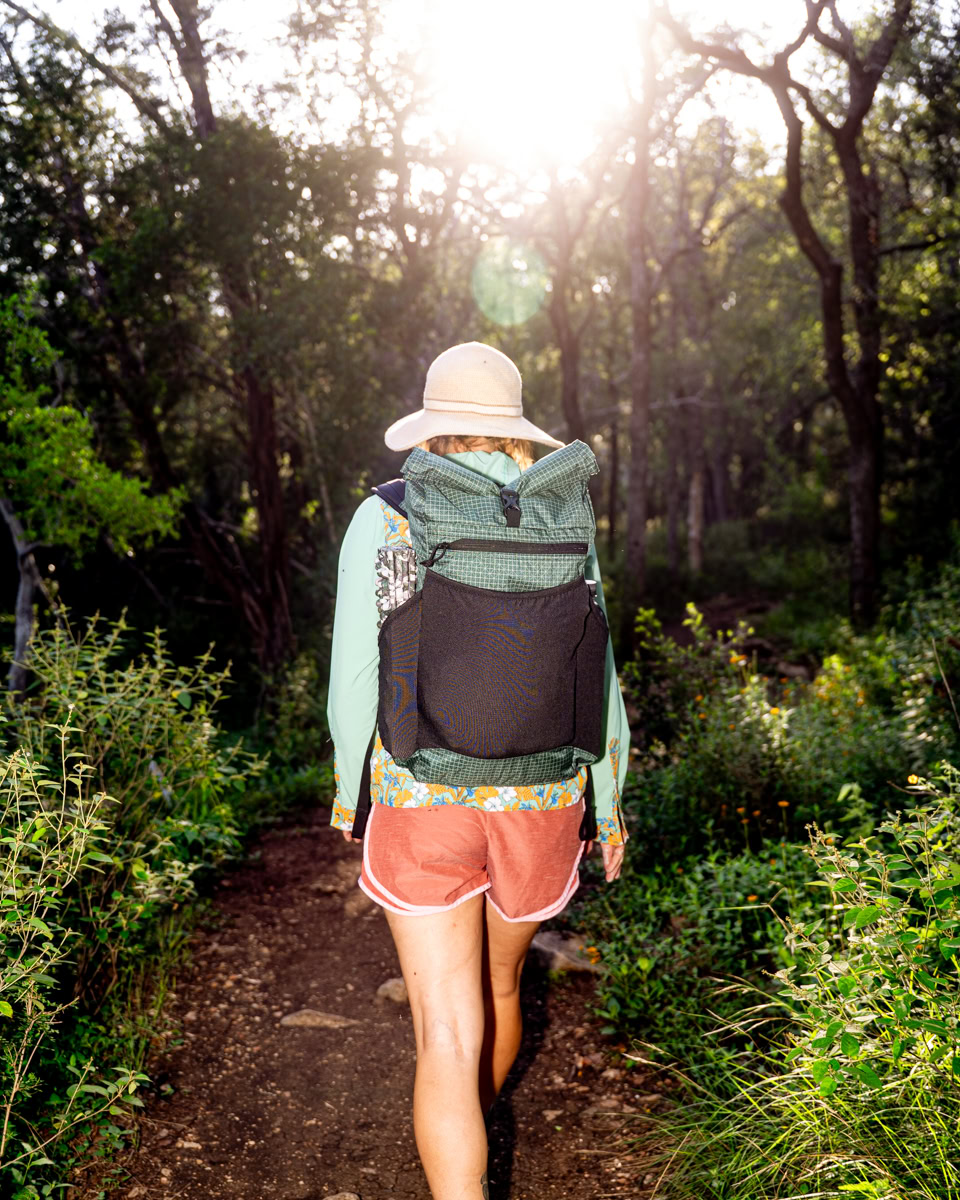
The Node vs. the Packrat: Which ULA Daypack Is Right for You?
When it comes to versatile daypacks, the ULA Node and the ULA Packrat are two of our most popular options. Both are lightweight, durable, and designed for everyday carry, travel, and trail use. But depending on your needs, one might suit you better than the other. Below, we break down the differences to help you decide which pack makes the most sense for your lifestyle and use case.
The Node actually started as an updated version of the Packrat but as its form and features continued to shift we increasingly noticed the different use cases that each offered. The result is two distinct hybrid packs that have the feature set and reliability of a day pack that could stand up to any trail or terrain, with the added functionality of everyday carry to store items like laptops, hard drives, and note books.
Aesthetically they fit in on trail or in town – but it’s important for you, the person reading this and considering these bags, to think about how you interact with your bags and what kind of experience you prefer.
If you’ve spent a lot of time on trail with a roll top bag, coming home to a Node with the same opening system might feel a lot more familiar and comfortable with its roll top opening. On the flip side, if you’re more partial to instant openings and more of a “bucket” style bag, that’d be the Packrat.
Although they both serve double duty here’s a simple way to cut through the noise – If you want something that’s more urban professional forward first and day pack second, that’s the Node. If you want something that’s a little more trail forward first and professional second, that’s the Packrat.
Carry Volume and Intended Use
At 20 liters, the Node is a minimalist’s dream—just enough room for your essentials, whether you’re heading to the office, catching a flight, or going on a short hike. It’s compact, structured, and purpose-built for people who want a clean, professional-looking pack that still performs outdoors. Lots of pockets (8 total including the main compartment!) and a more streamlined aesthetic with the strap keeps and top strap as opposed to the cinch of the Packrat.
The Packrat comes in slightly larger at 25.5 liters, giving you a little more space to work with. It’s designed to strike a balance between urban functionality and trail performance. If you’re looking for something that can carry your daily essentials plus an extra layer, lunch, or a camera kit—this might be the better fit. This is also the bag for you if you prefer to hike with a water reservoir, the cinch top of the Packrat allows a hydration straw to stick out of the top which is harder to achieve on the Node.
CARRYING SYSTEM
Node
- Padded shoulder harness with ULA’s S-strap
- Structured, semi-rigid back panel due to padded laptop sleeve. (no frame, but reinforced shape)
- Removable sternum strap
- Dragonfly hipbelt attachment points for added support.
- Slim, close-to-back profile reduces swing during bike commutes or fast-paced walking
Packrat
- Same S-curve harness as the Node
- Not as much padding on the back panel. The Packrat has a single panel of padding for the laptop sleeve again the back of the pack, while the Node laptop sleeve is “sandwiched” between padding.
- Drawcord collar compresses vertically; pack flattens easily when near-empty
- Removable sternum strap and Dragonfly hipbelt-compatible
- Carries well in dynamic environments like scrambles or bike travel
Use Case Considerations:
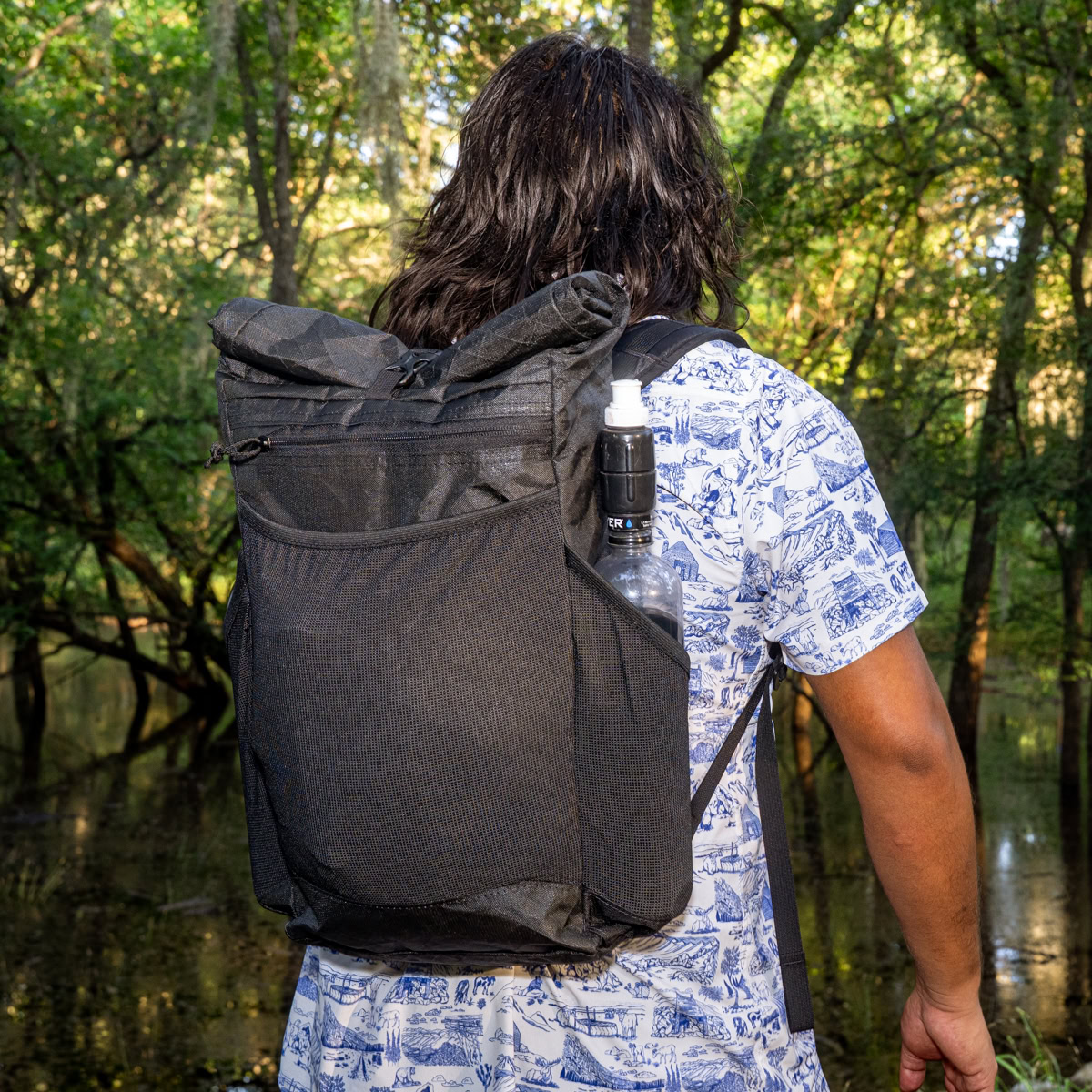
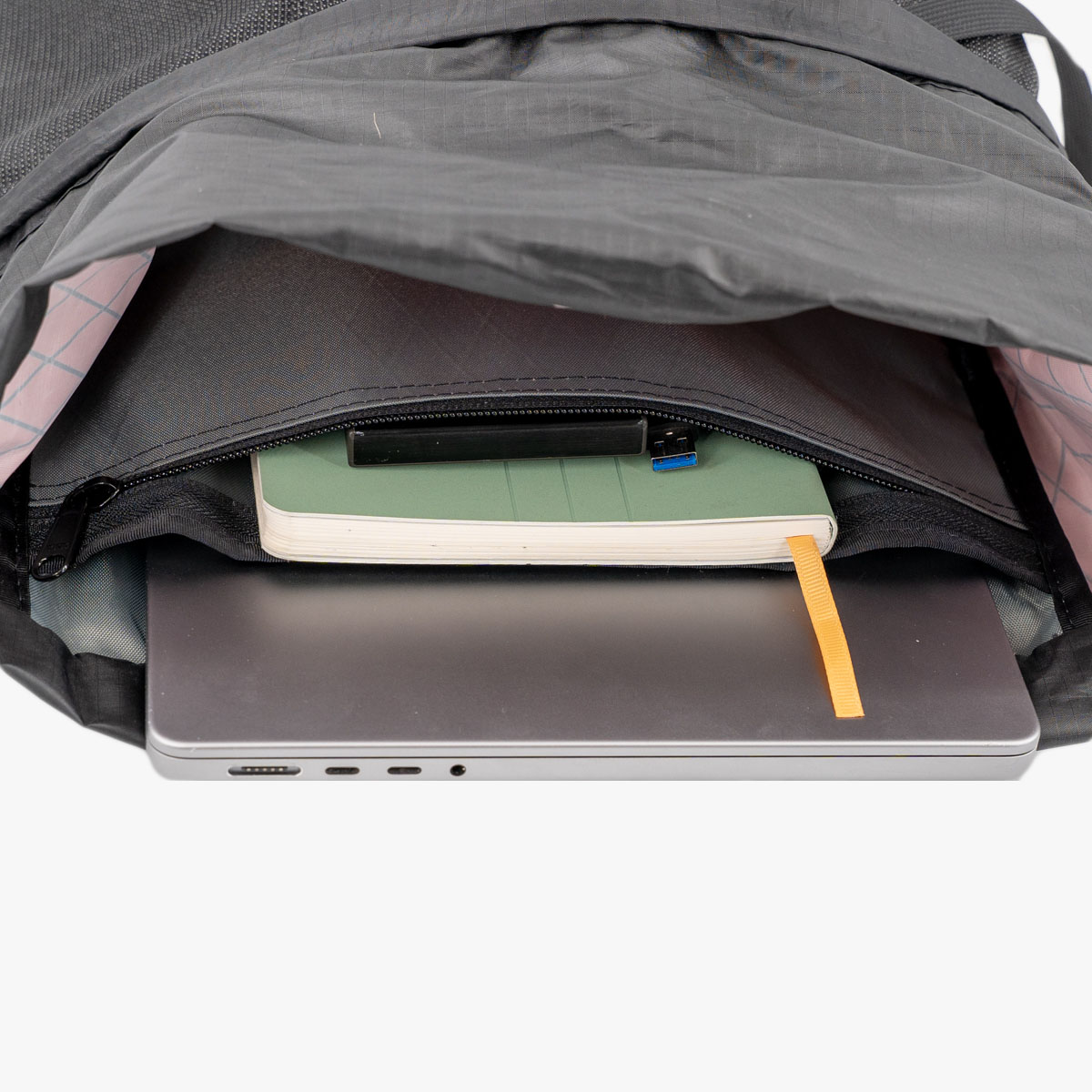
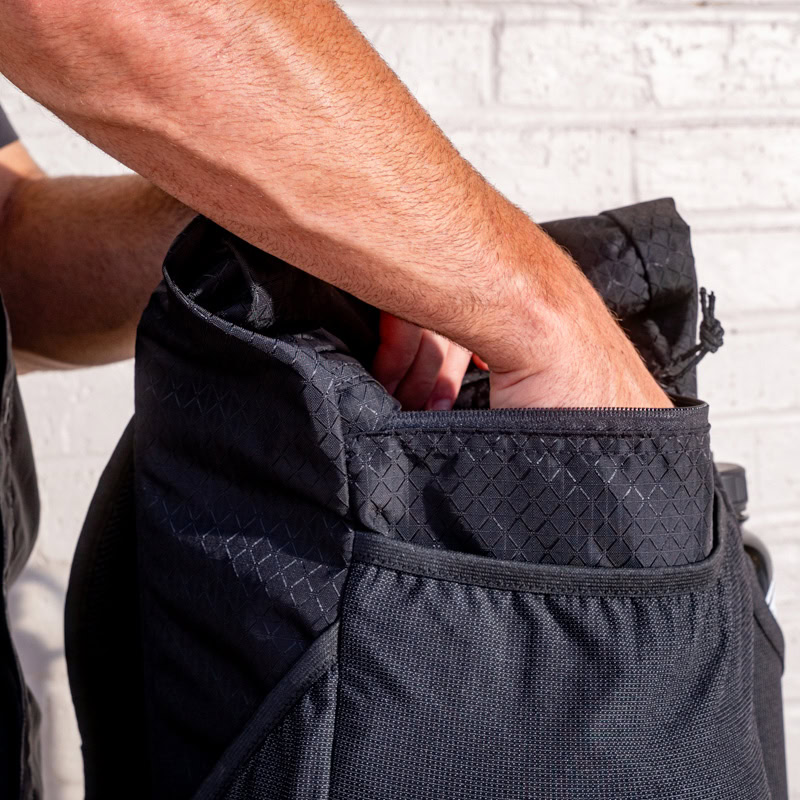
Materials and Construction
Node
At the time of this article being published we offer: Robic 420D, 330D Brushed Robic, and ULTRA™ 200X
- Robic 420D: A durable, high-tenacity nylon with excellent abrasion resistance and a polyurethane coating for weather protection. This version has a more structured feel and classic, understated aesthetics — great for urban and travel use where durability is key.
- 330D Brushed Robic: 330D Brushed Green Robic is a lightweight, high-tenacity nylon fabric with a subtle matte finish and a soft hand feel. Unlike traditional shiny nylons, the brushed finish gives it a muted, almost canvas-like texture that feels less technical and more refined.
- ULTRA™ 200X: A high-performance composite laminate made from woven UHMWPE and recycled polyester. It’s extremely tear-resistant, waterproof (face fabric rated to ~200 psi), and lighter than Robic. Offers a slicker hand-feel and a more technical look and performance for trail or ultralight use.
- Pockets: Both versions use UltraStretch woven mesh on the side and front pockets — highly elastic, tear-resistant, and designed for long-term durability.
- Drainage: Laser-cut drain ports on all mesh pockets to prevent water pooling.
- Feel: Robic version is more structured and “pack-like”; Ultra version is lighter, more rigid, and highly water resistant in the body fabric.
Packrat
Offered in: ULTRA™ 200X and X-Pac VX21
- ULTRA™ 200X: The lightest and most technical option, this laminate offers incredible weather performance, high abrasion and tear resistance, and a sleek, minimal aesthetic. Ideal for weight-conscious users or high-exposure environments.
- X-Pac VX21: A 4-layer laminate that combines a 210D nylon face with a waterproof film, polyester X-grid, and backing fabric. It’s highly weather-resistant, structured, and offers a slightly stiffer feel than ULTRA. X-Pac has a more “rugged gear” look with the grid pattern and color choices while Ultra looks a bit more sleek and techy.
- Collar: Regardless of body material, the Packrat uses a silnylon drawcord collar for top closure. This keeps weight down and allows overstuffing, but it’s not waterproof, so sensitive electronics should be stowed in a dry bag if you’re expecting heavy rain.
- Pockets: Same UltraStretch mesh as the Node — ideal for stuffing jackets, bottles, or quick-access items.
- Feel: ULTRA version is lighter and more compressible; X-Pac version is stiffer, slightly heavier, and has more structure when empty.
Get more in depth coverage of the differences between Ultra and Robic.
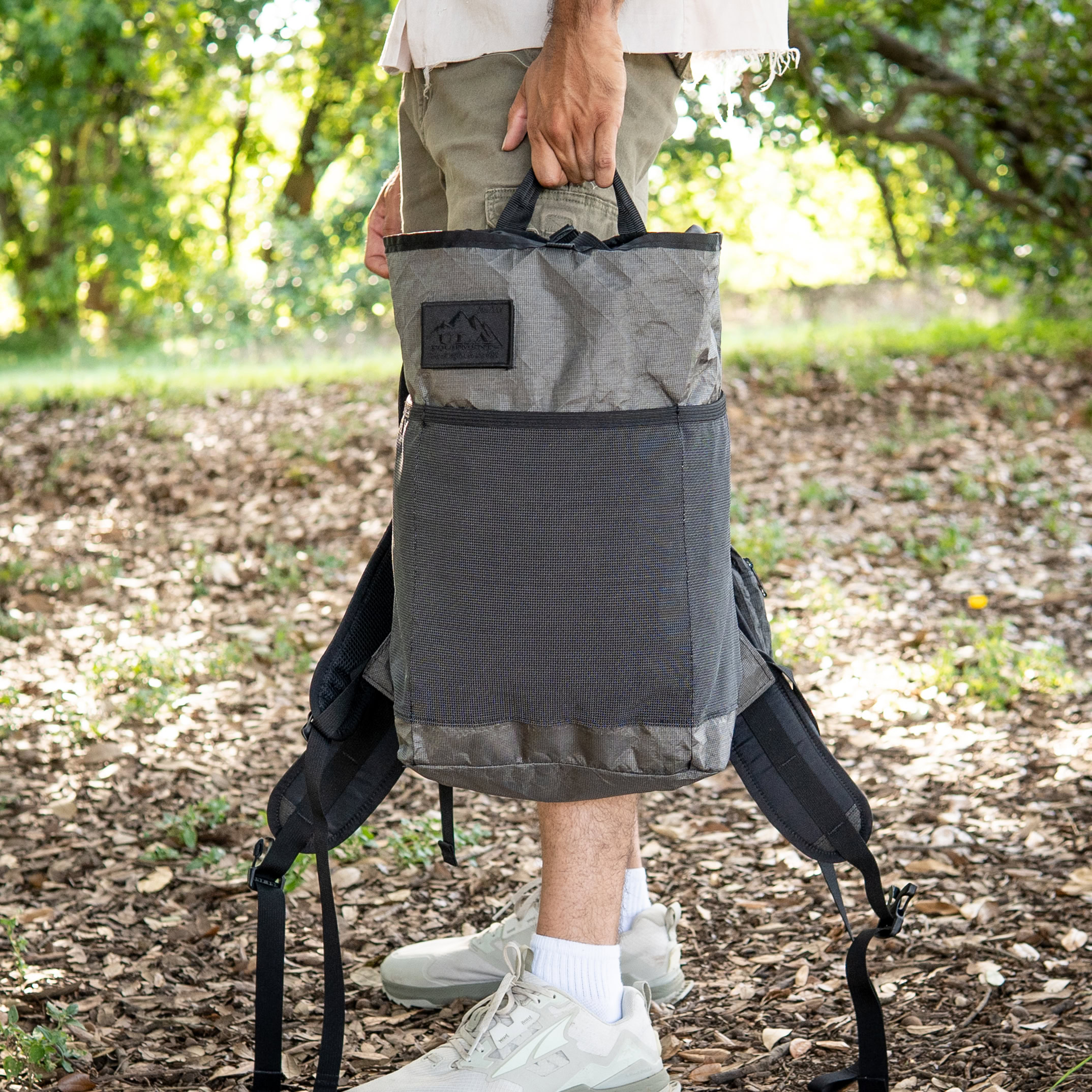
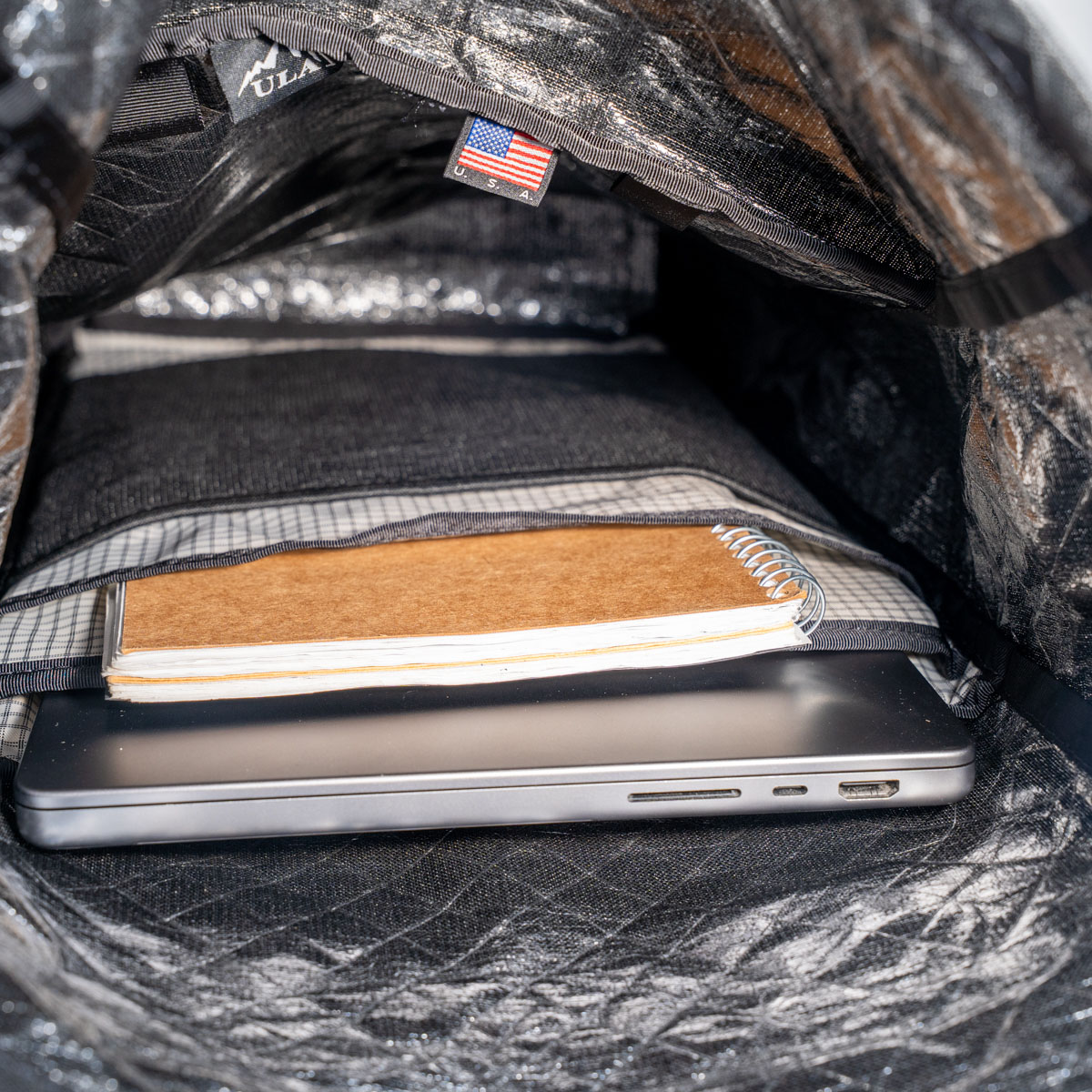
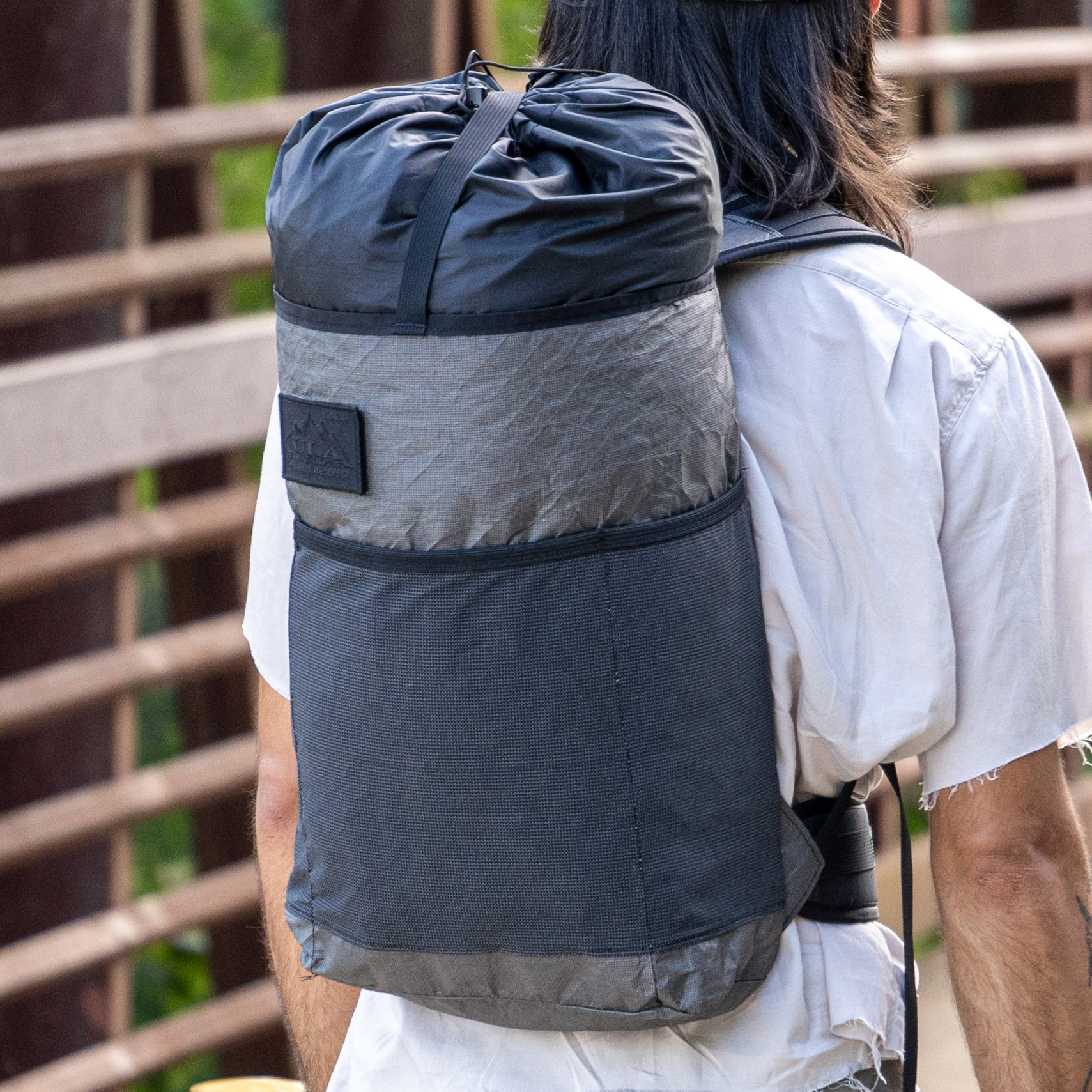
Organization and Features
Both packs are designed to transition easily between everyday and outdoor use. They feature stretch mesh side pockets, a front kangaroo pocket, internal sleeves for laptops or hydration bladders, and attachment points for optional hipbelts.
The Node has a padded laptop sleeve, plus two internal sleeves, one static, one stretch mesh, and a quick access stash pocket. It features a roll-top closure with a top strap and strap keeper, and the laser-cut drain holes on the outer pockets are a nice touch for wetter environments.
The Packrat uses a drawcord-style collar with a small compression strap at the top, which makes it easier to overstuff when needed. It also has a lightly padded back panel for added comfort and flattens easily when not in use—great for travel.
One important note: while the ULTRA fabric on the Packrat is waterproof, the drawcord collar itself is made from silnylon, which can leak in heavy rain. If you’re commuting or hiking in wet conditions, we recommend using a dry bag for electronics or choosing the Node’s more weather-resistant roll-top.
It should also be noted that we do not seam seal our packs so if you expect torrential rain, make sure you’ve got a pack cover or bag liner or both!
Comfort and Carry
Both packs feature our signature S-strap shoulder straps for a contoured fit, and both include removable sternum straps meaning you can upgrade to the magnetic Fidlock. You can also add on the ULA Dragonfly hipbelt for additional support, especially if you’re carrying heavier loads.
The Node carries close to the back and distributes weight well thanks to its structured design. It’s a bit more rigid, which helps keep your gear organized and secure.
The Packrat, while frameless, feels incredibly light and flexible. Its padded back panel adds comfort without bulk, and it performs surprisingly well on short hikes with up to 15–20 pounds of gear.
Final Thoughts
So which one should you choose?
If you want a sleek, structured pack that handles travel, commuting, and light outdoor use without breaking a sweat, the Node is your pack. It looks just as good walking into a client meeting as it does on the trail.
If you need a little more room, love lightweight gear, and want something that compresses easily for travel or storage, the Packrat is a versatile daypack that punches above its weight.
Both packs are built in our Logan, Utah shop with the same attention to detail and quality that defines all ULA products. Whichever one you go with, you’re getting a reliable companion that’s designed to move with you—on trail, in town, or wherever your day takes you.

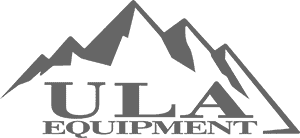
0 Comments